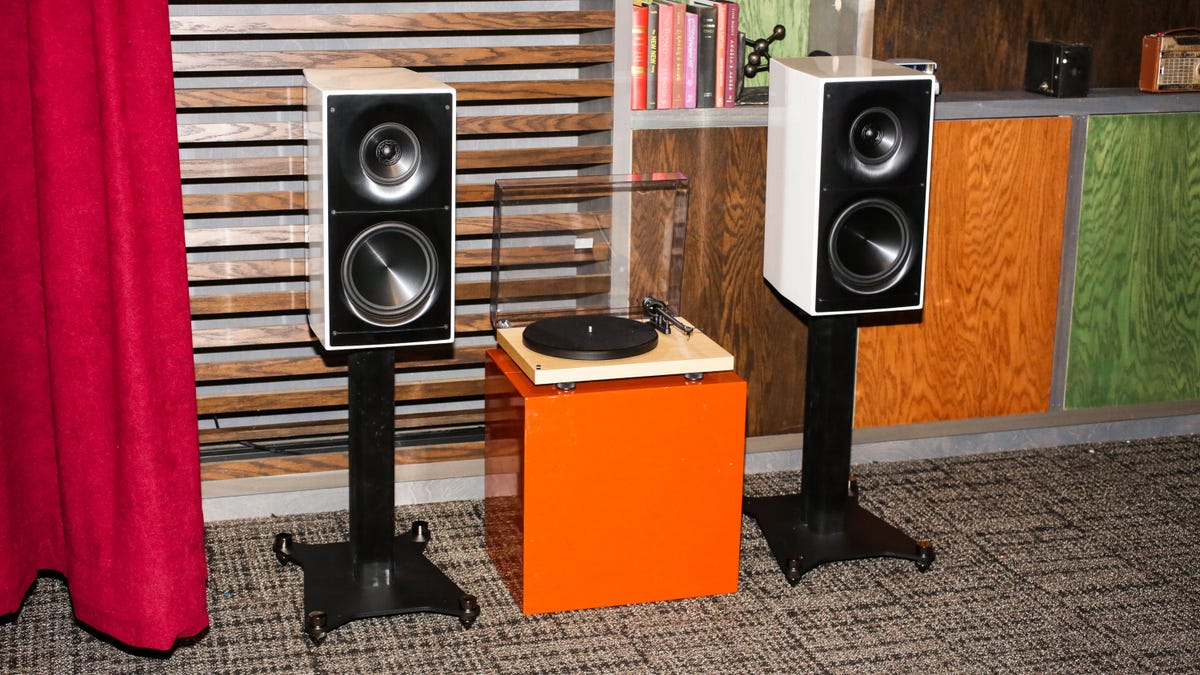How to stop worrying about speaker impedance
The Audiophiliac and ELAC’s speaker designer Andrew Jones set out to demystify speaker impedance.

I wouldn't blame you if you assumed an 8 ohm speaker is always 8 ohms, but it's not. Far from it, an 8 ohm rated speaker is actually 8 ohms only a small percentage of the time because the speaker's impedance varies, depending on the frequencies the speaker is playing at any given moment. Sometimes an 8 ohm speaker might be 7 ohms, or at times 29 ohms, or even 44 ohms. It's all over the place.
All speakers have an impedance rating in ohms, which represents how difficult the speaker is to power. The lower the impedance, the more efficiently it allows the electric signal, which is basically the music, to pass through the speaker. Most speakers are rated at 4, 6 or 8 ohms, and cheaper receivers can sometime have issues driving low-impedance (namely 4 ohm) speakers.
ELAC speaker designer Andrew Jones.
But that rating is just a baseline. Look at the impedance graph ELAC speaker designer Andrew Jones provided for this article. This speaker's impedance is rated at 6 ohms, but when you look at the graph you'll see the speaker's impedance peaks at 47 ohms at approximately 25 Hertz, plummets to 5 ohms at 200 Hertz, rockets up to 35 ohms at 2 kHz, falls to around 9 ohms at approximately 7 kHz and so on.
Look at the graph one more time and you'll see this 6 ohm rated speaker is rarely 6 ohms. The rating is a shorthand that's mostly concerned with a speaker's lower impedances.
This is an impedance graph for a 6 ohm speaker
Andrew Jones thinks some speaker buyers fret too much about impedance, especially when they're considering buying 6- or 8-ohm rated speakers. Those speakers are in the sweet spot for amp matching, no worries there.
Four-ohm speakers are another story, they can place higher demands on 6- or 8-ohm rated receivers and amps' power reserves, but even those receivers/amps won't run into trouble with 4-ohm speakers, as long as you're not playing music or movies at a very loud volume.
But even if you pushed the volume too high for a party the receiver/amp's protection circuits would likely shut down the receiver or amp before any damage was done. No wonder speaker impedance confuses lots of buyers!
When in doubt about a 4 ohm speaker's compatibility with a receiver, check with the speaker's and/or receiver's manufacturer. If your speakers are rated at 6- or 8-ohms, and most are, don't worry about matching impedance with your receiver or amp. The above YouTube video features an in-depth interview with Jones discussing impedance.
So while speaker impedance can be confusing, most of the time it need not be.

